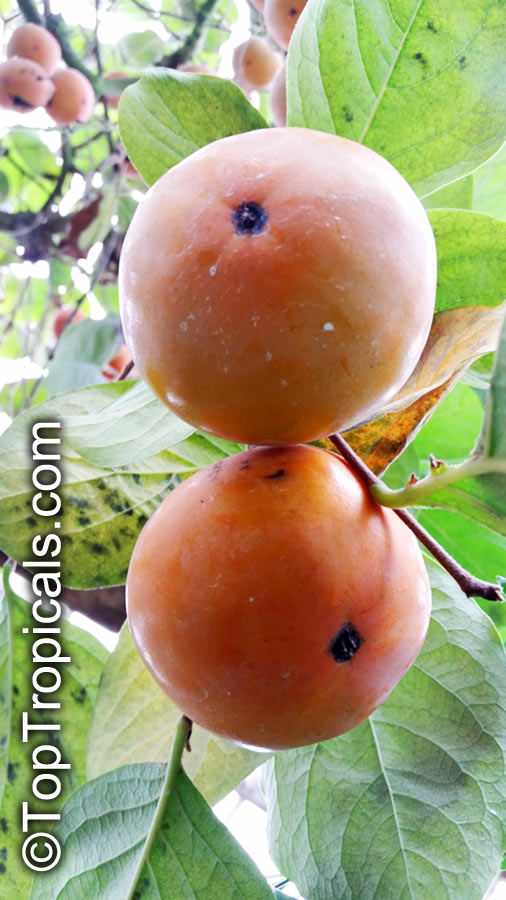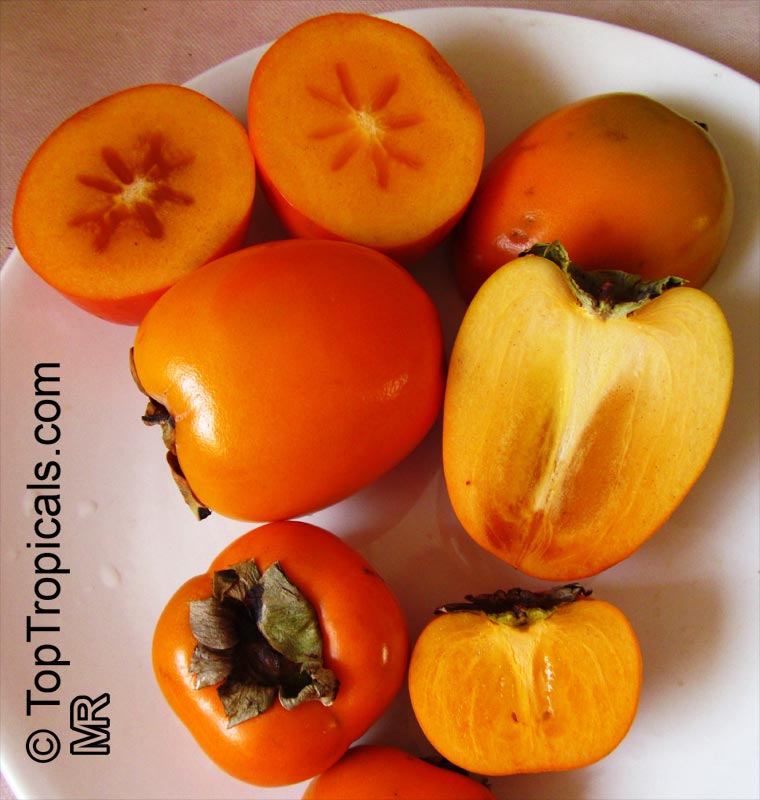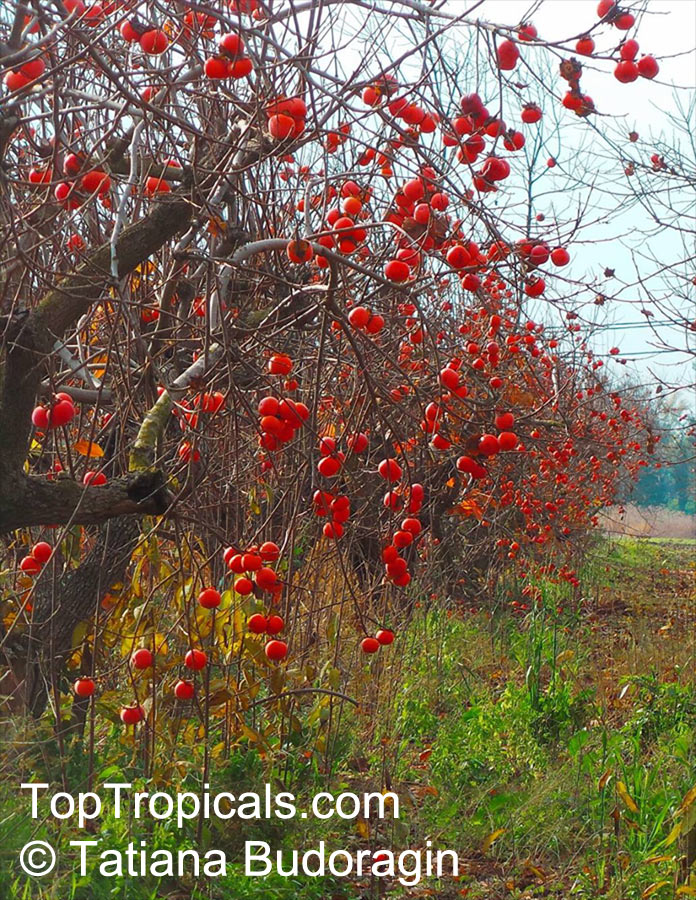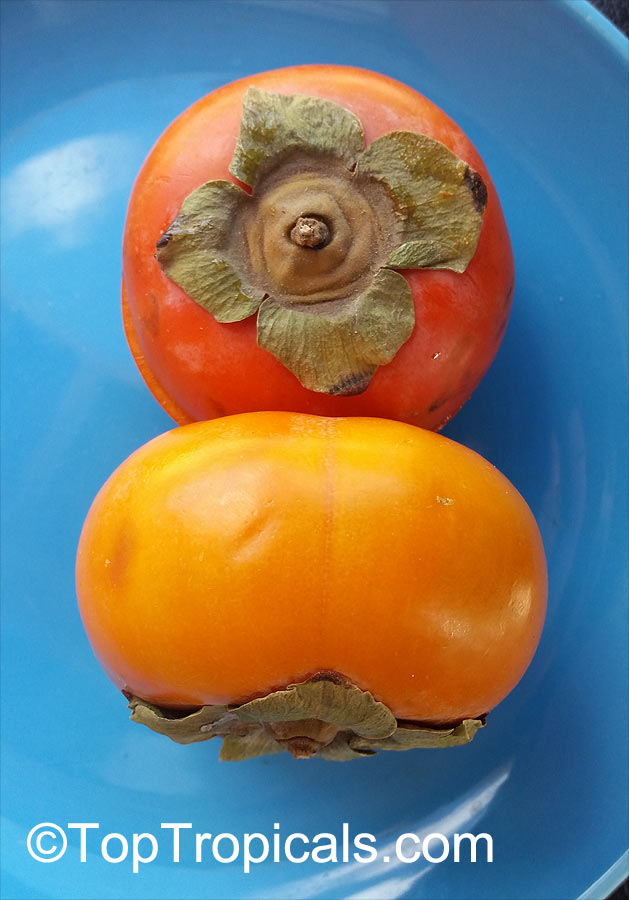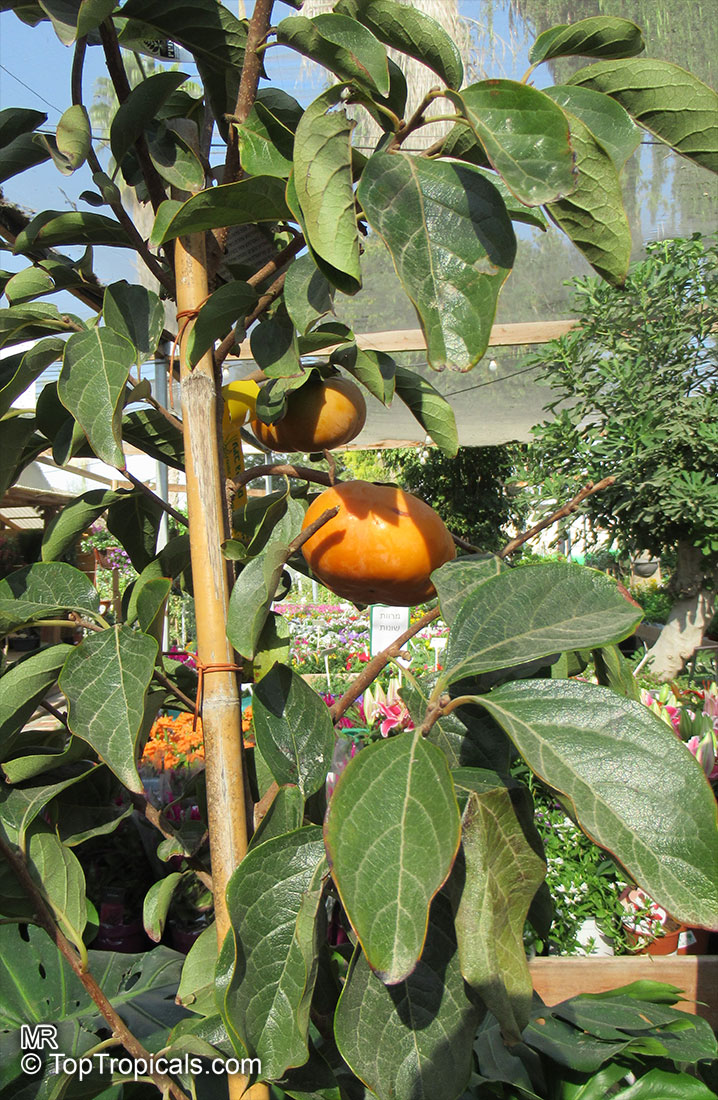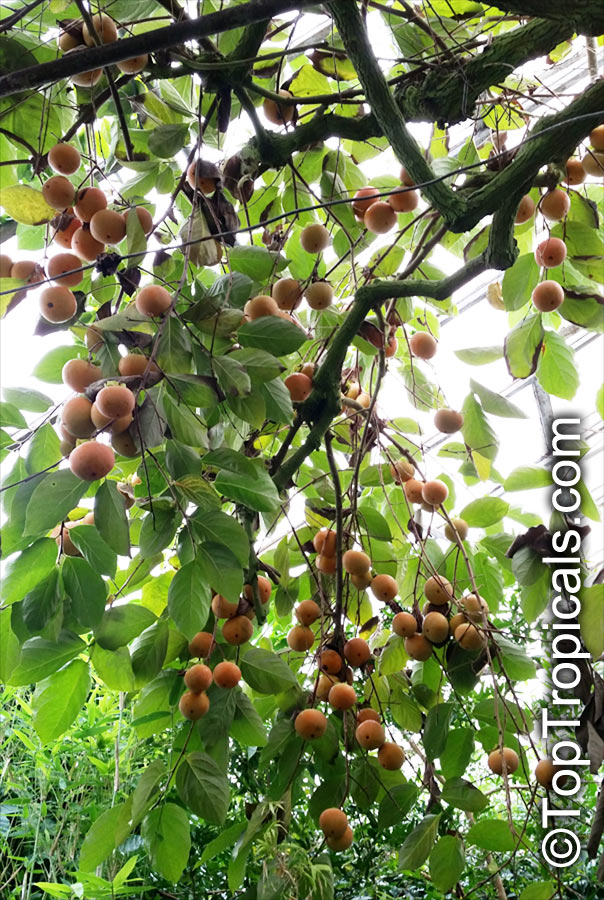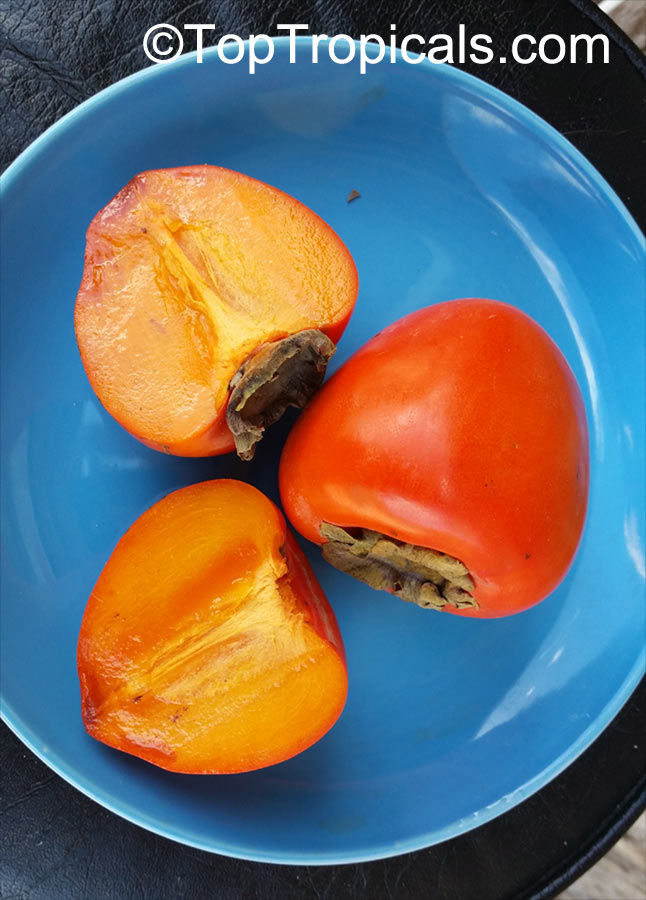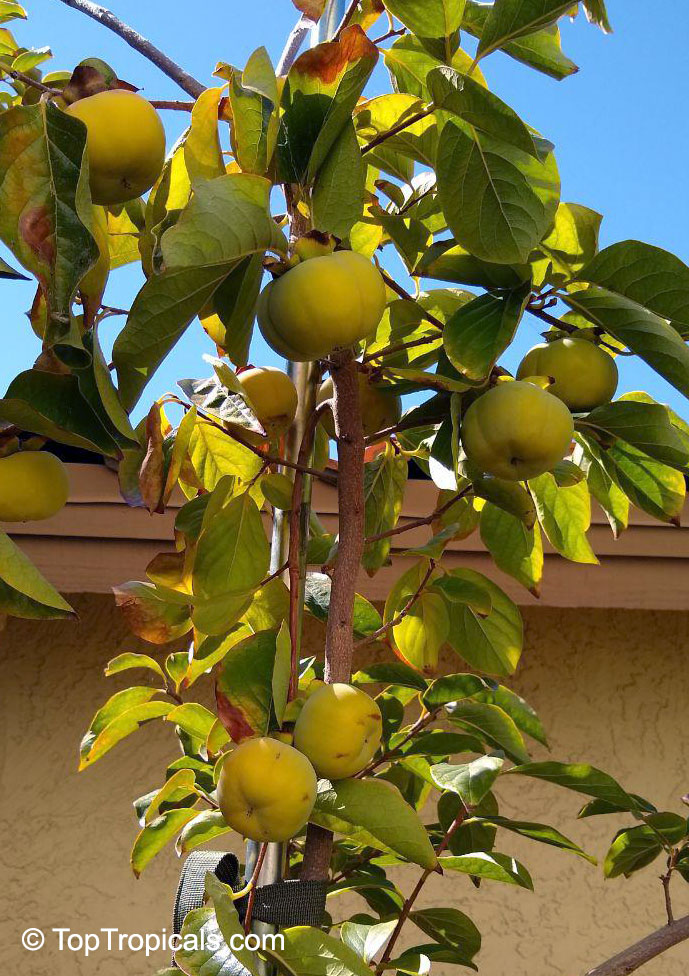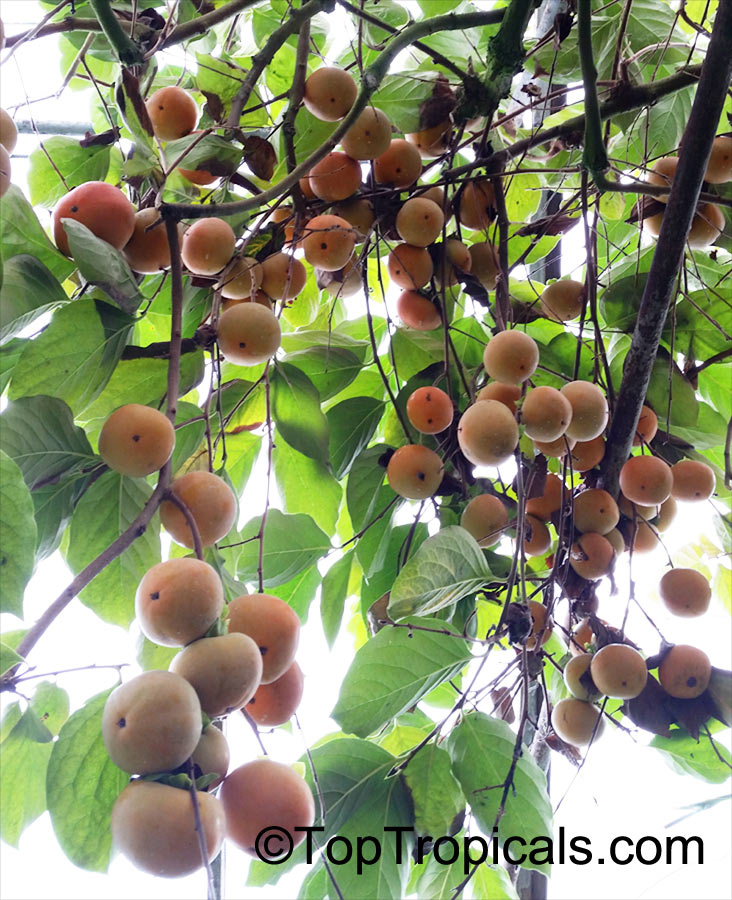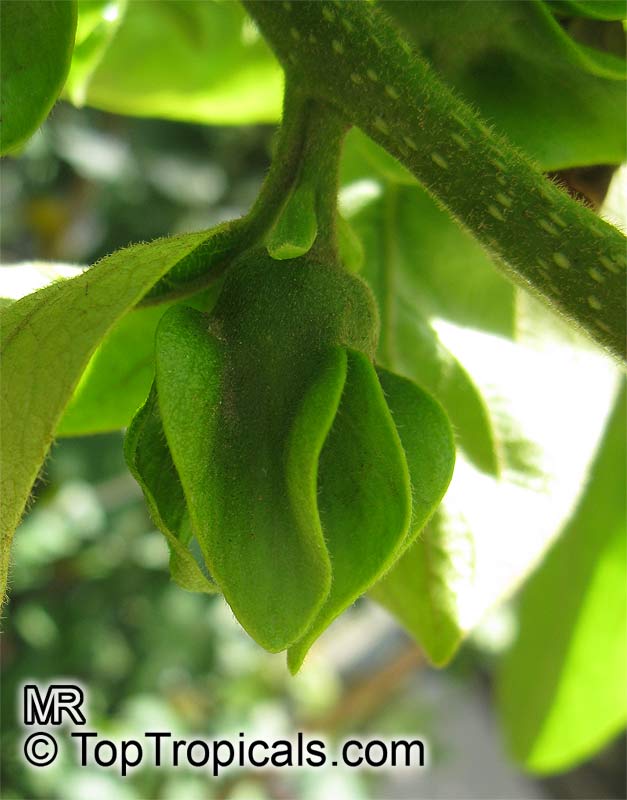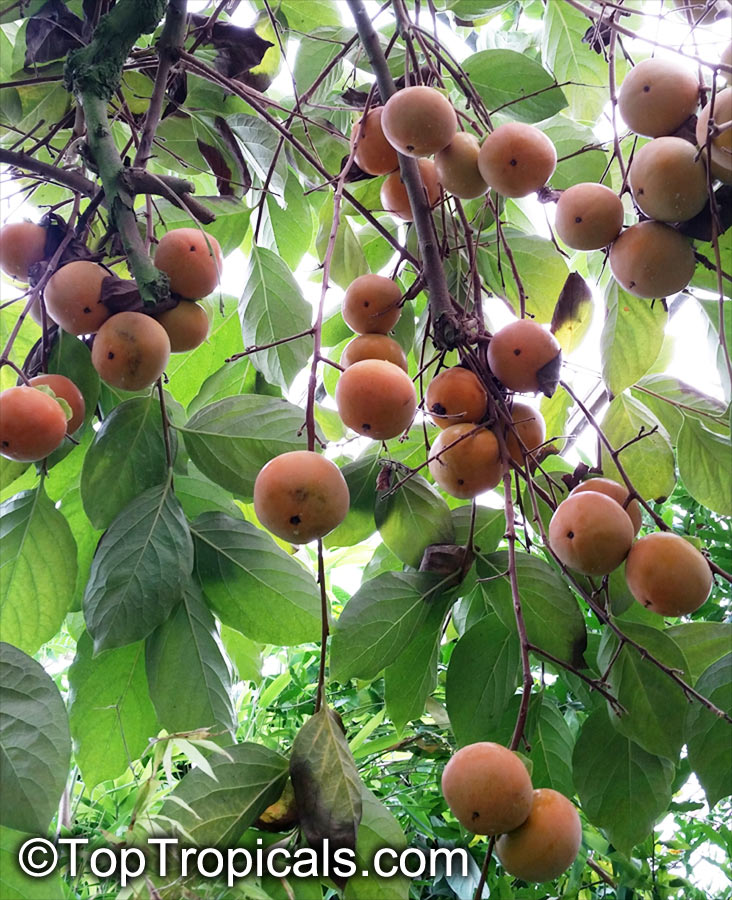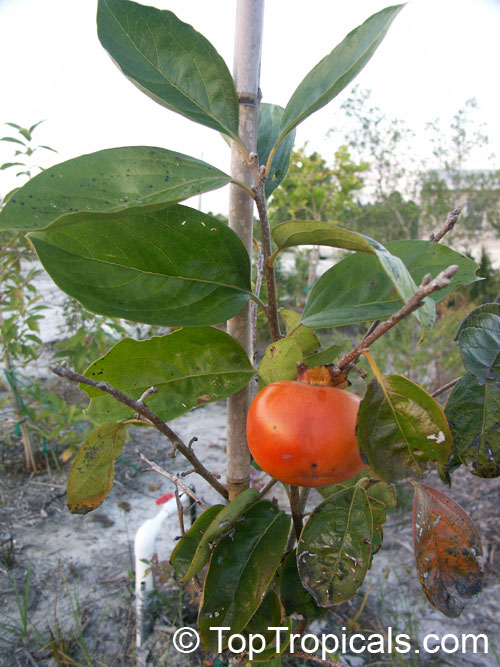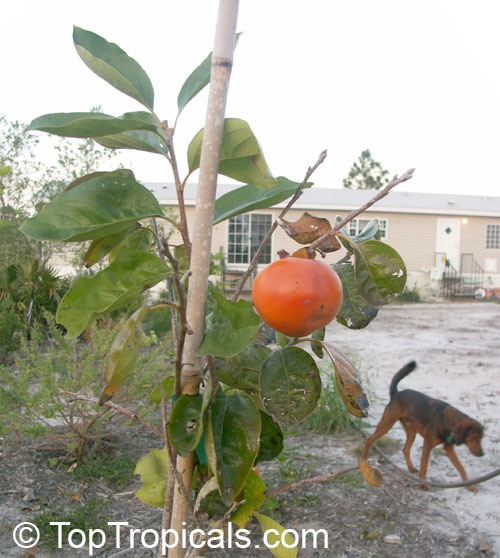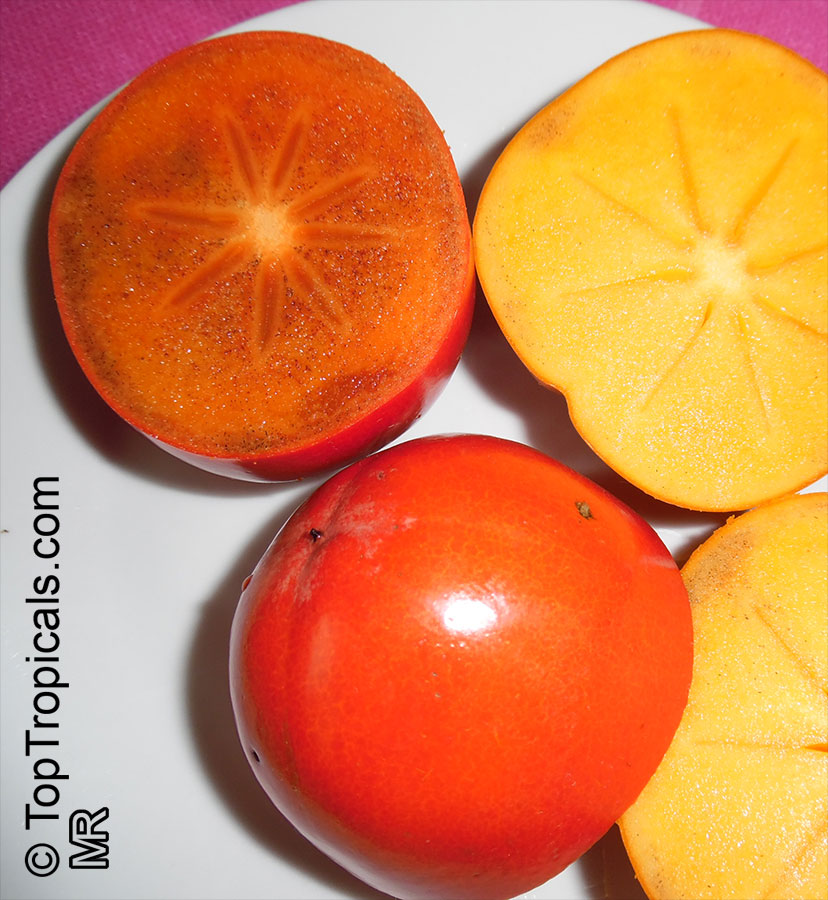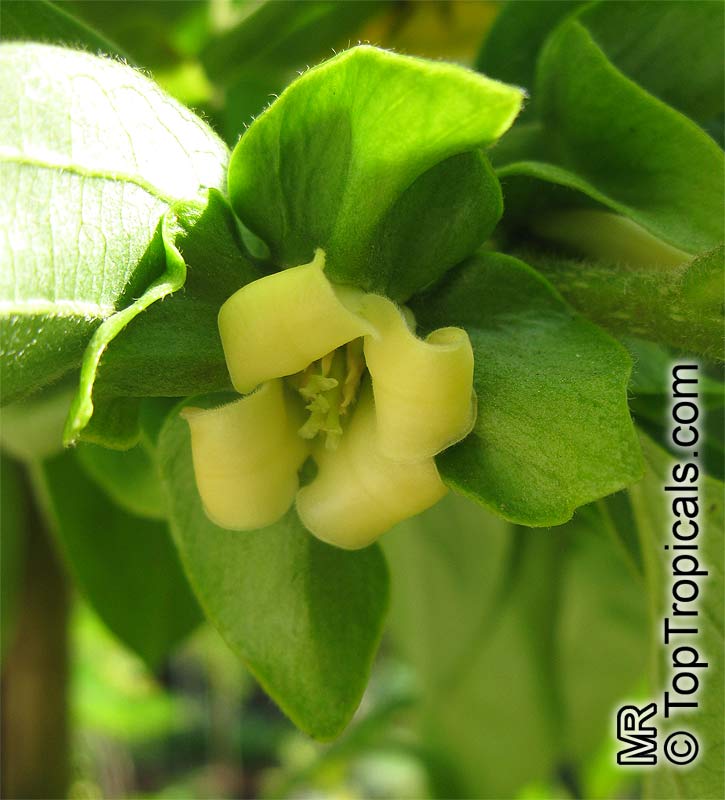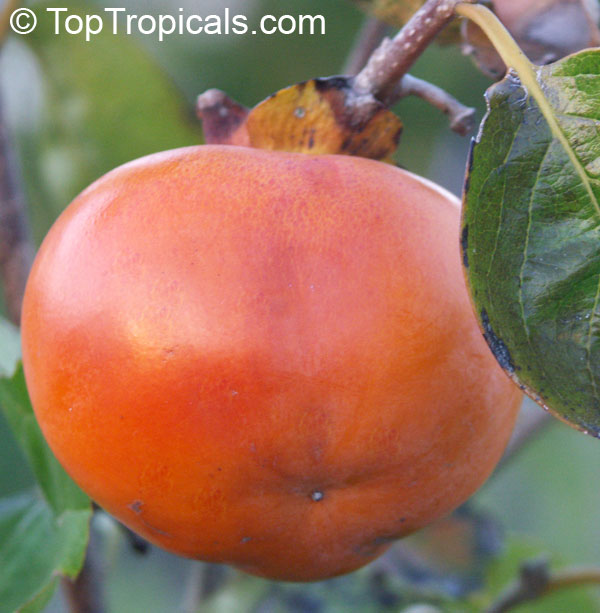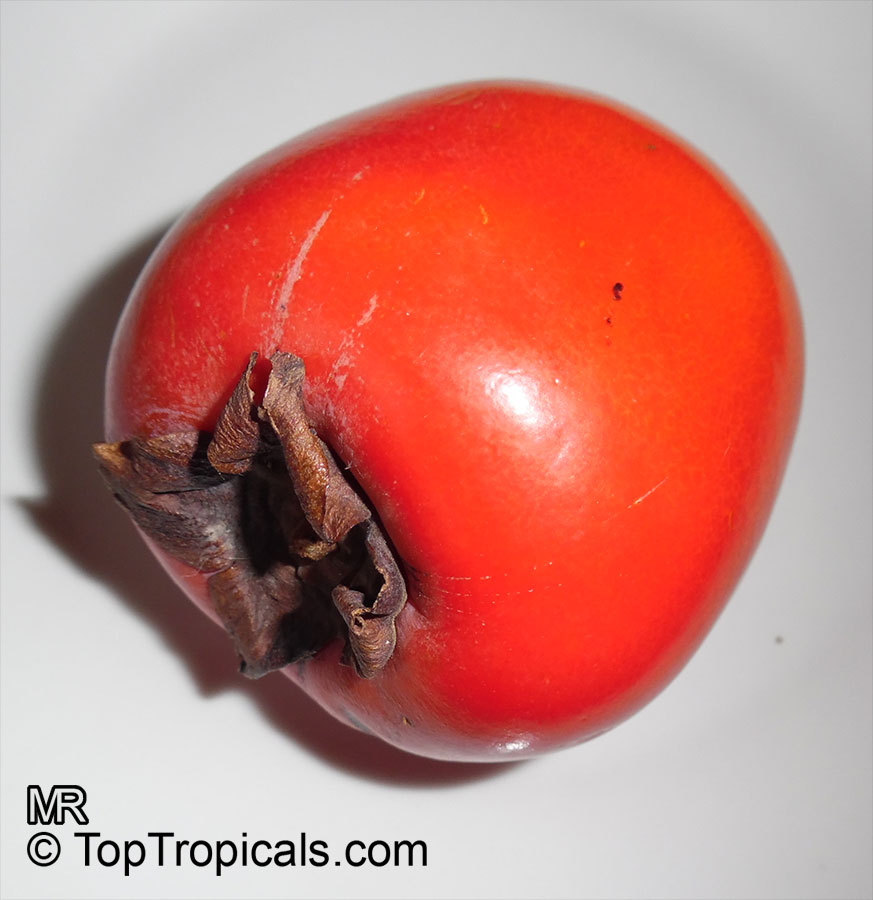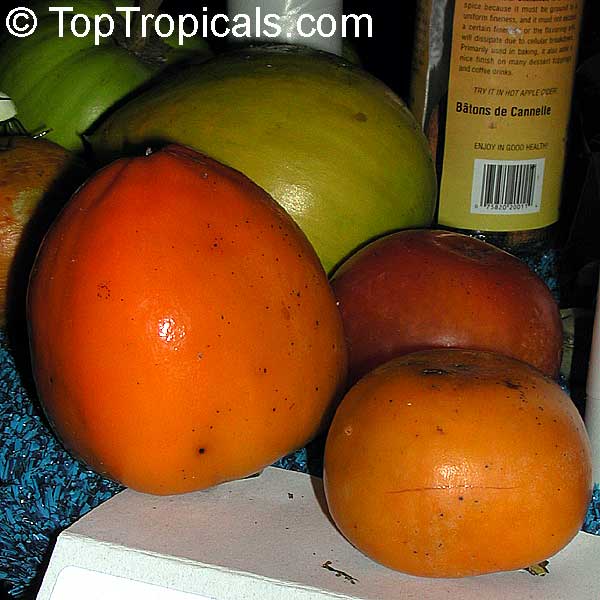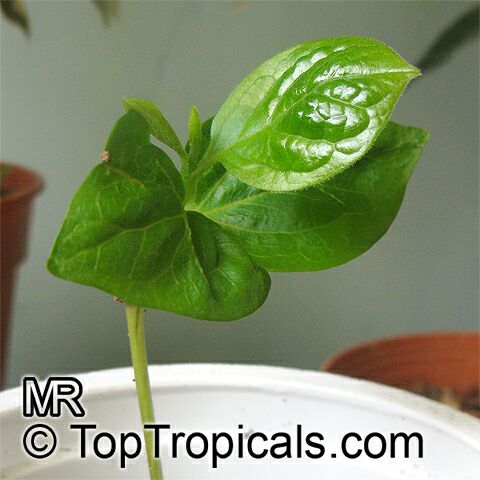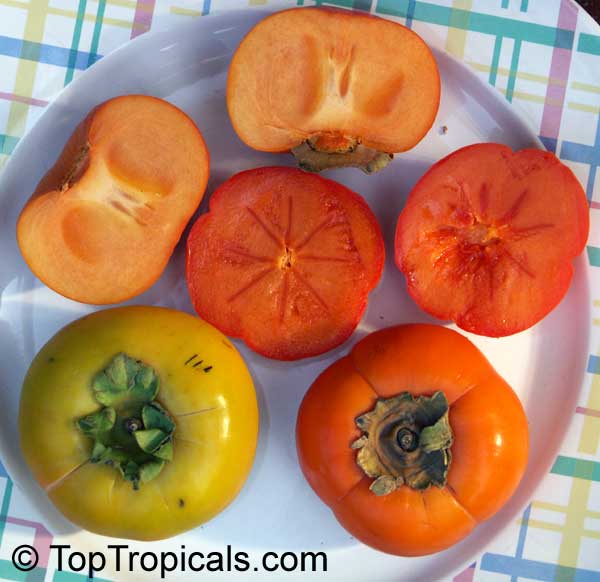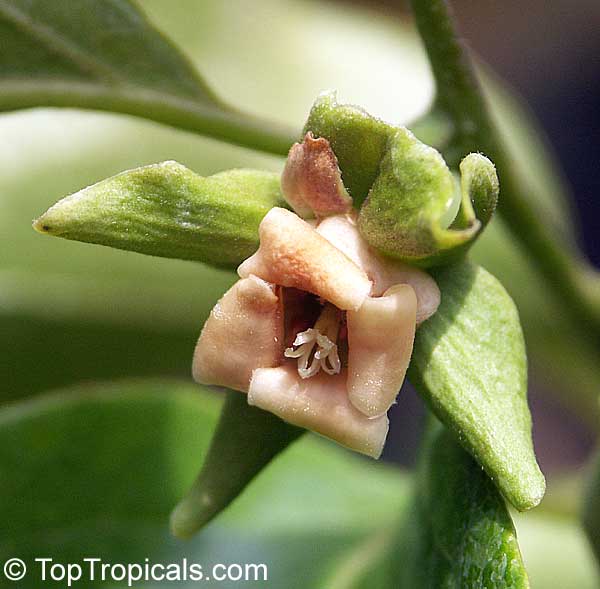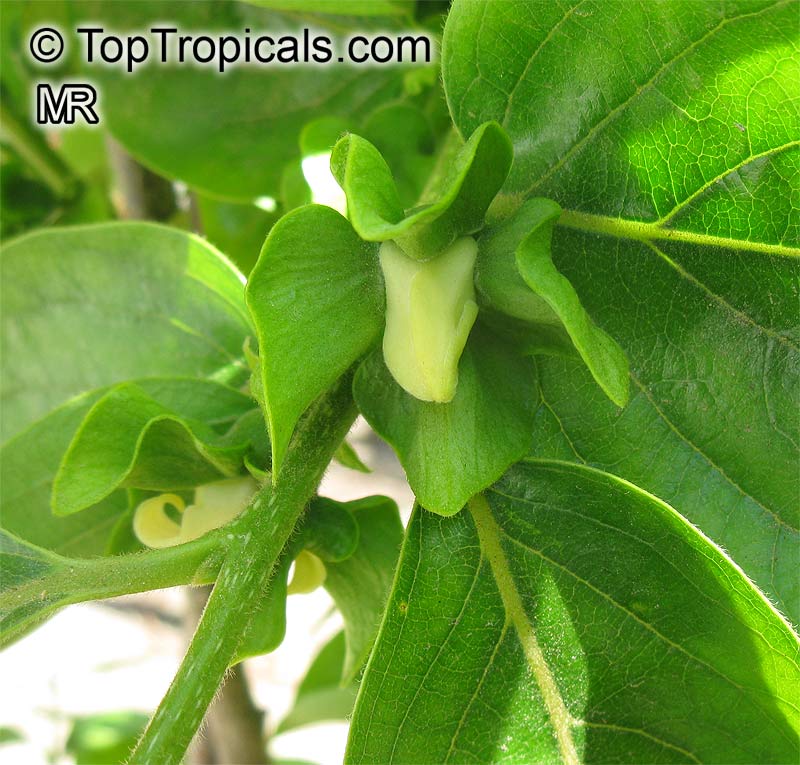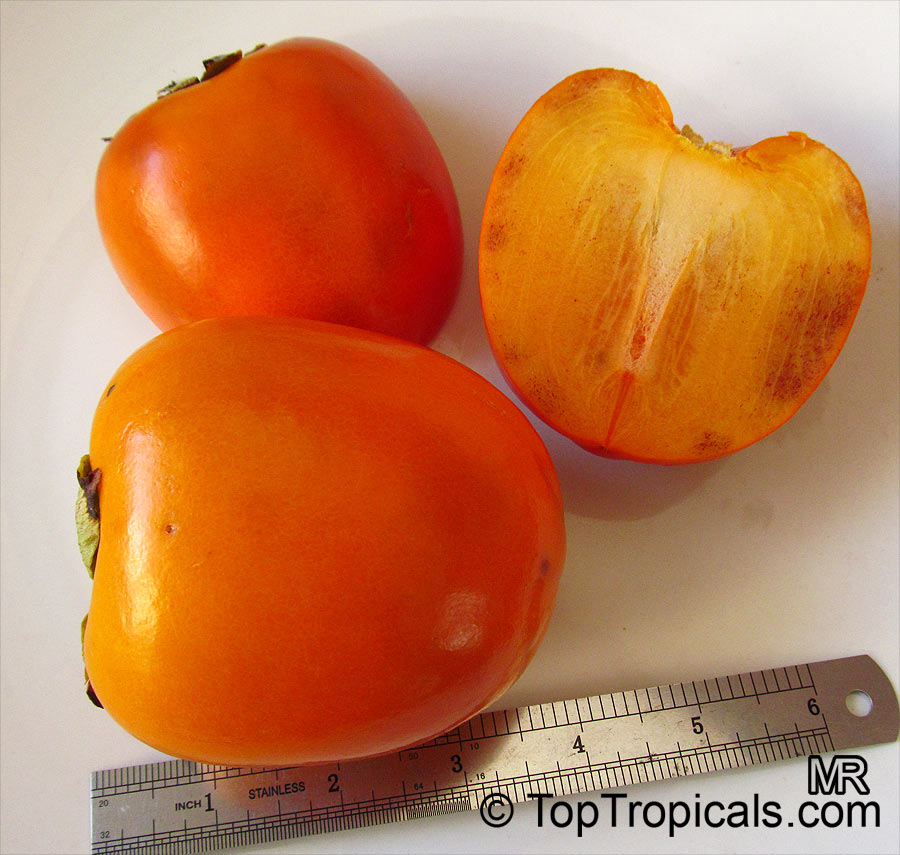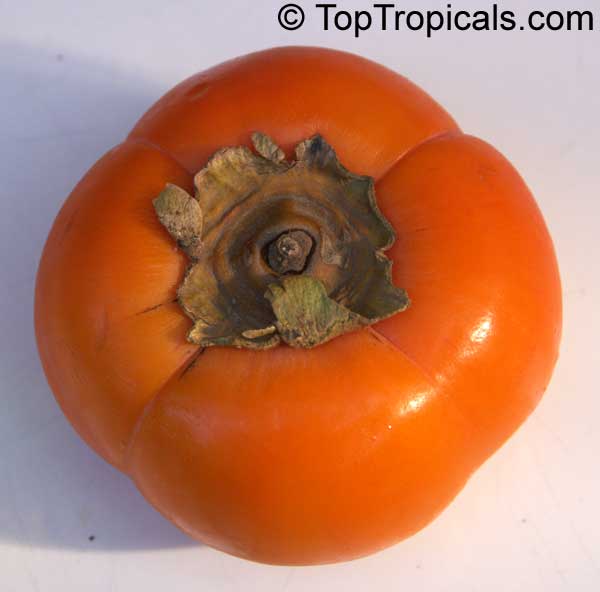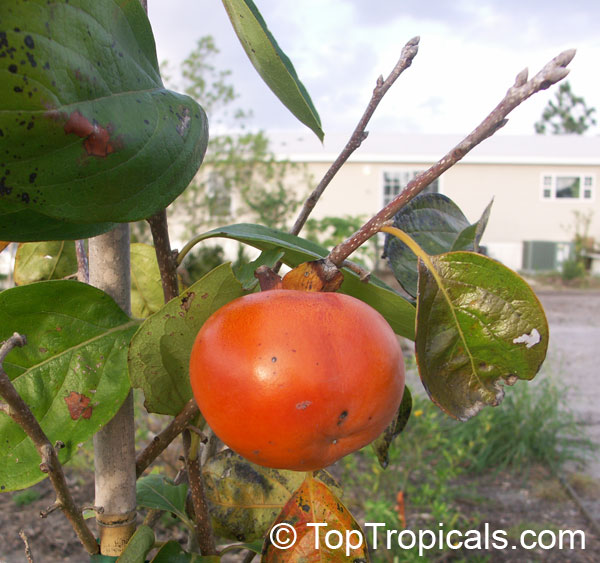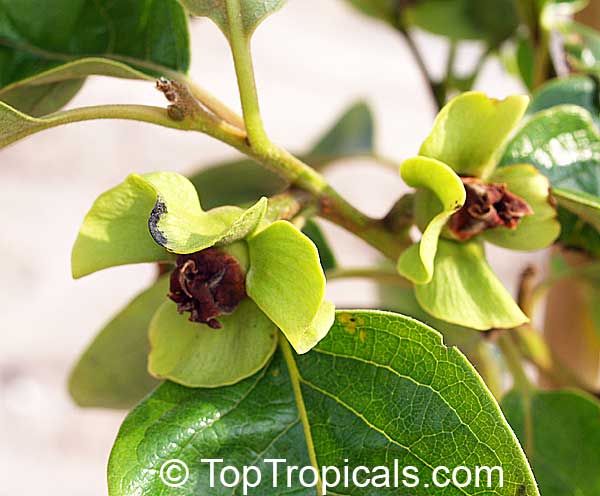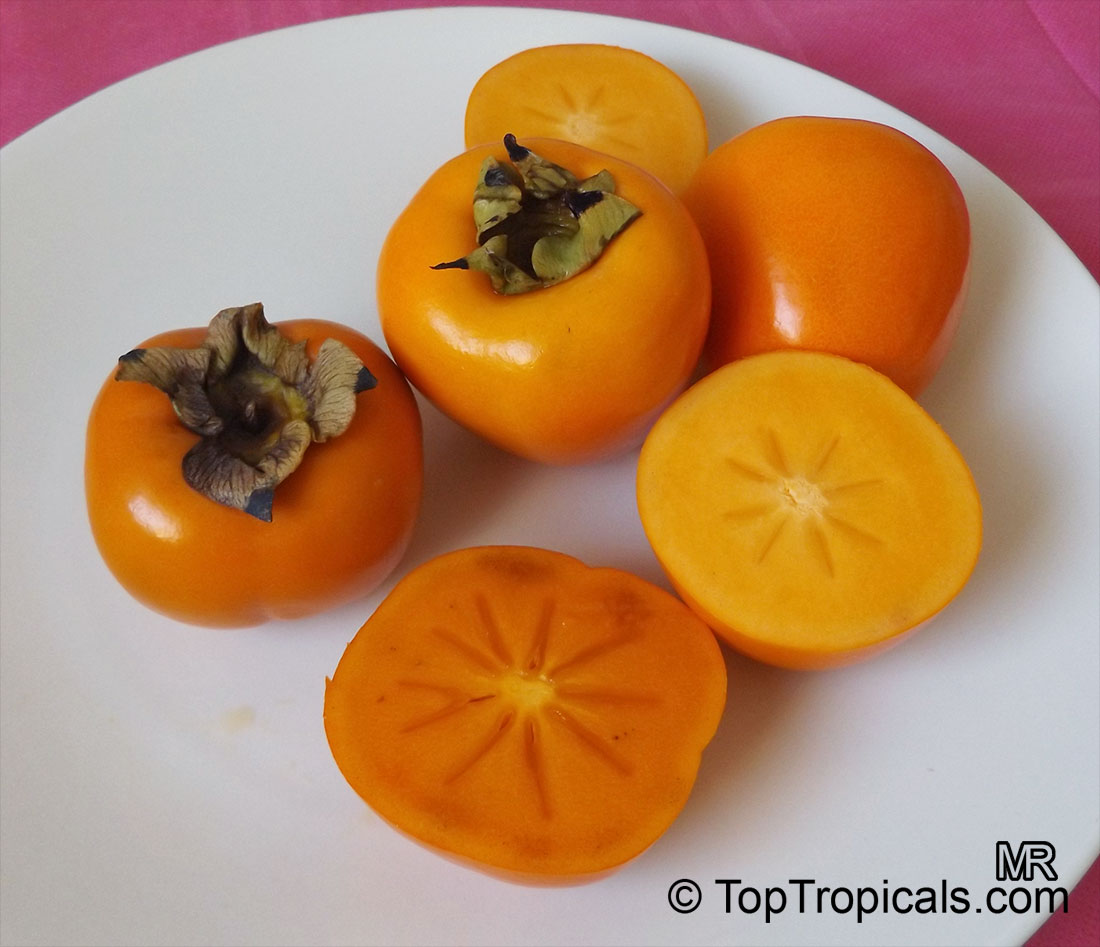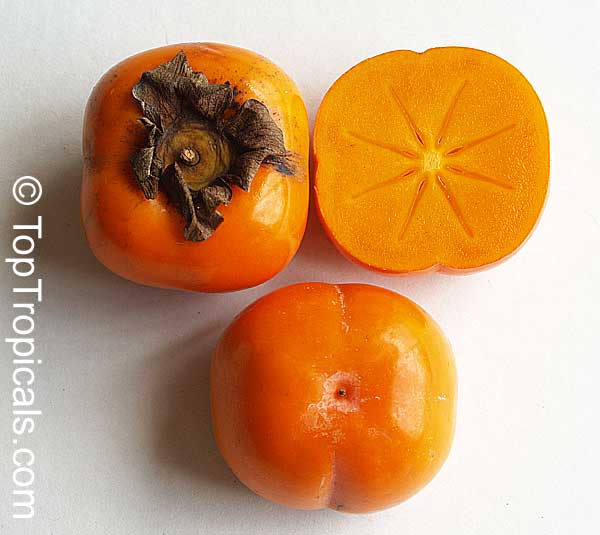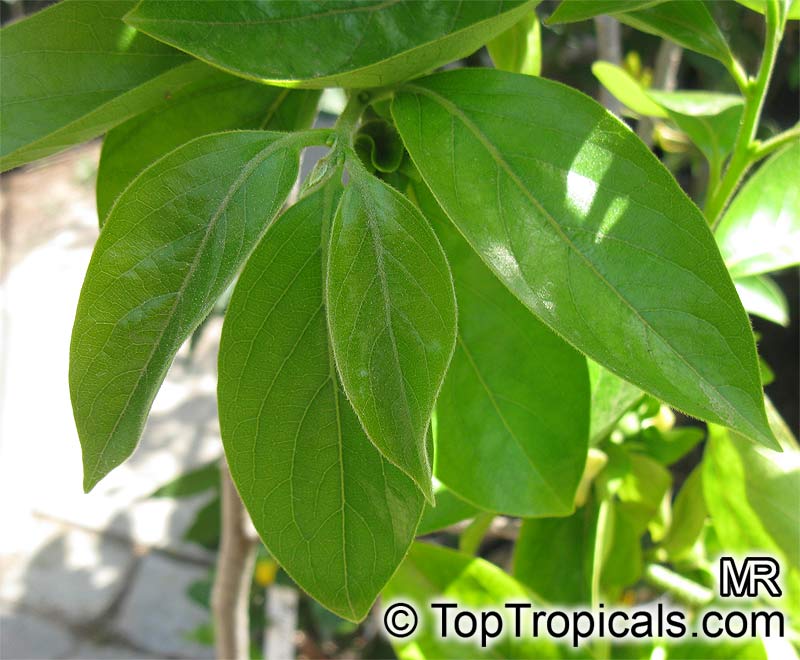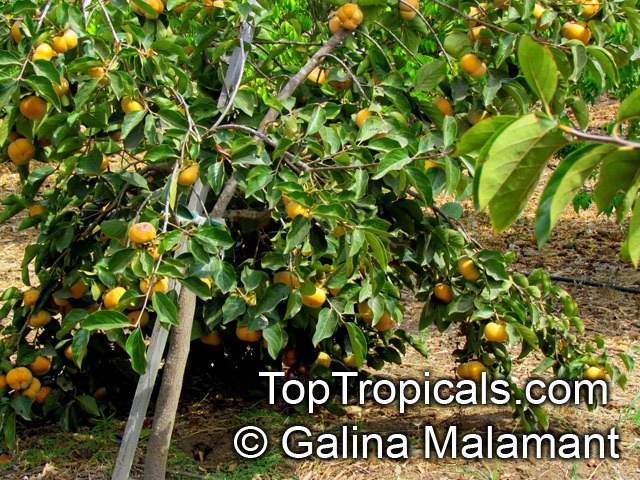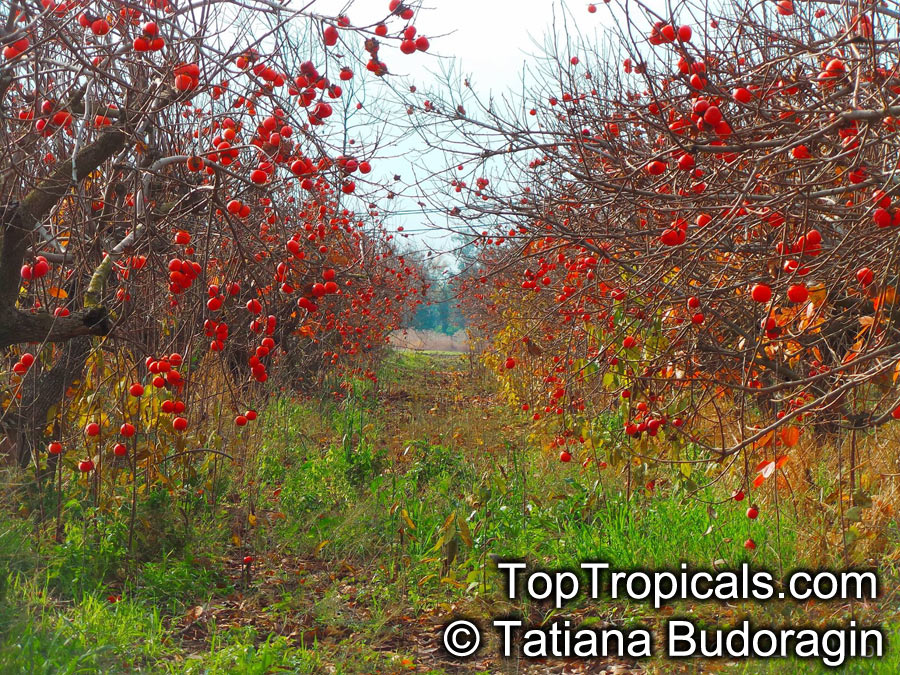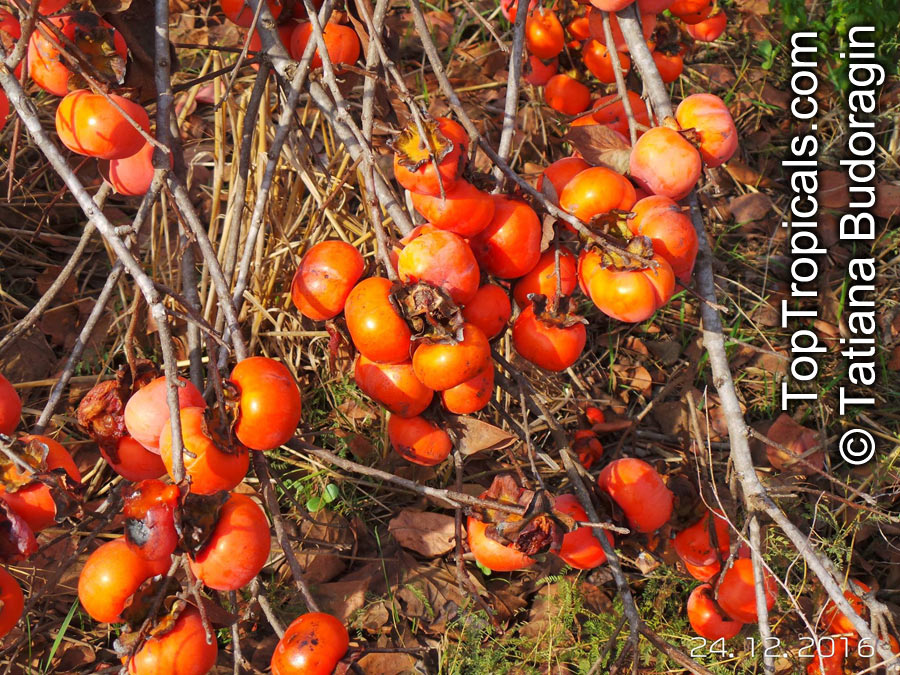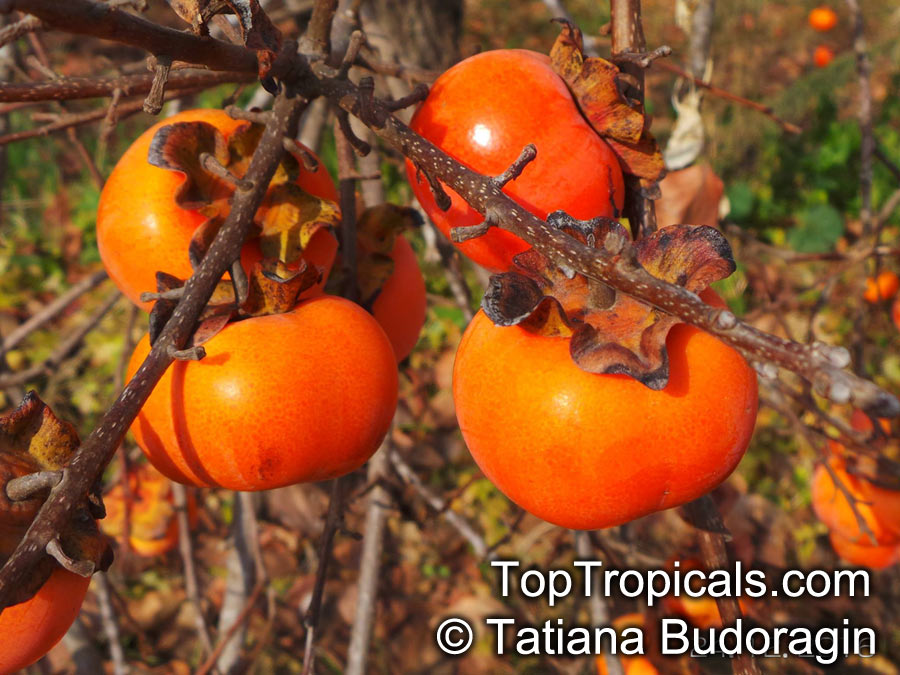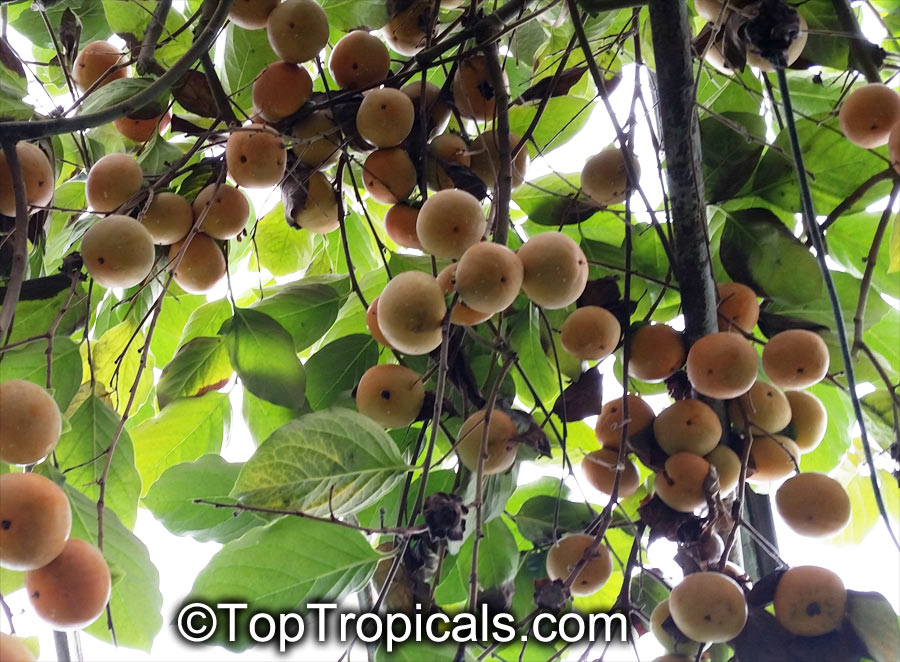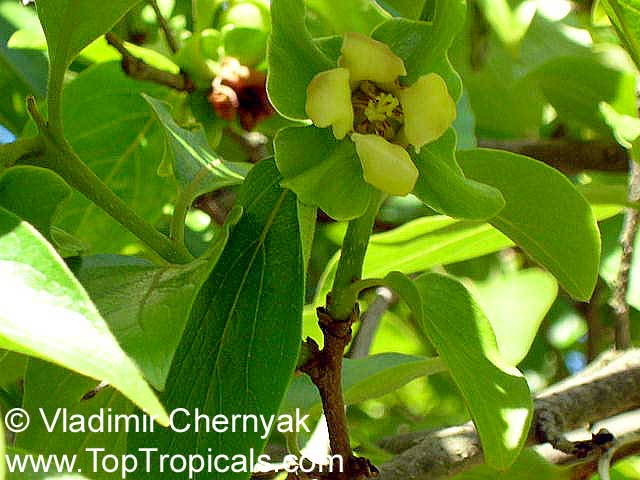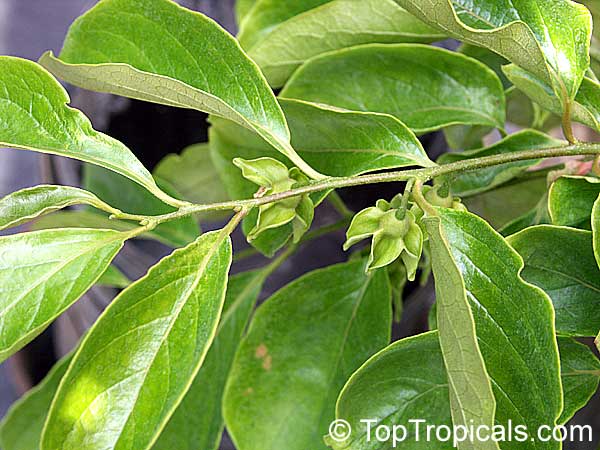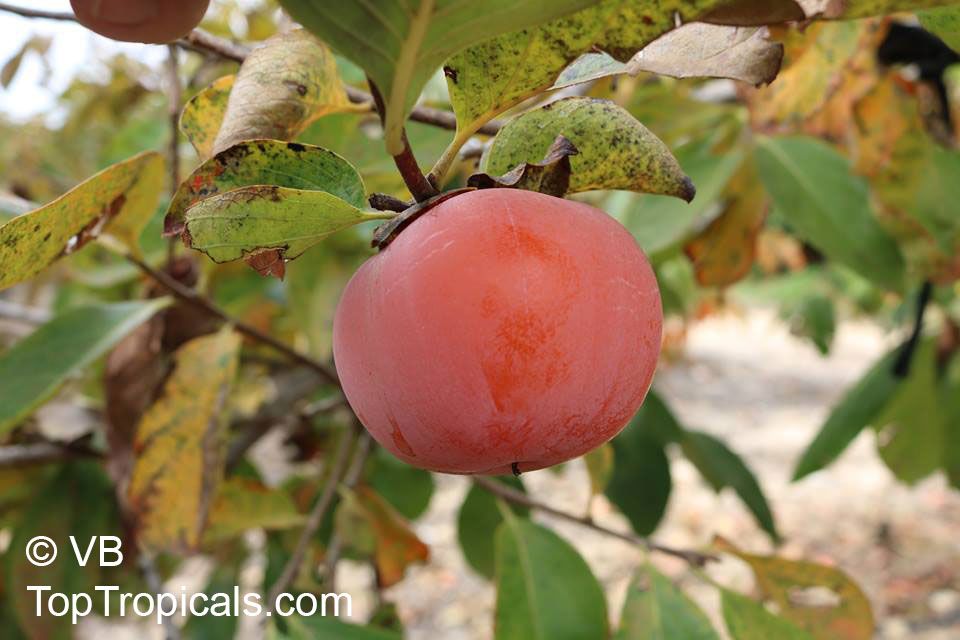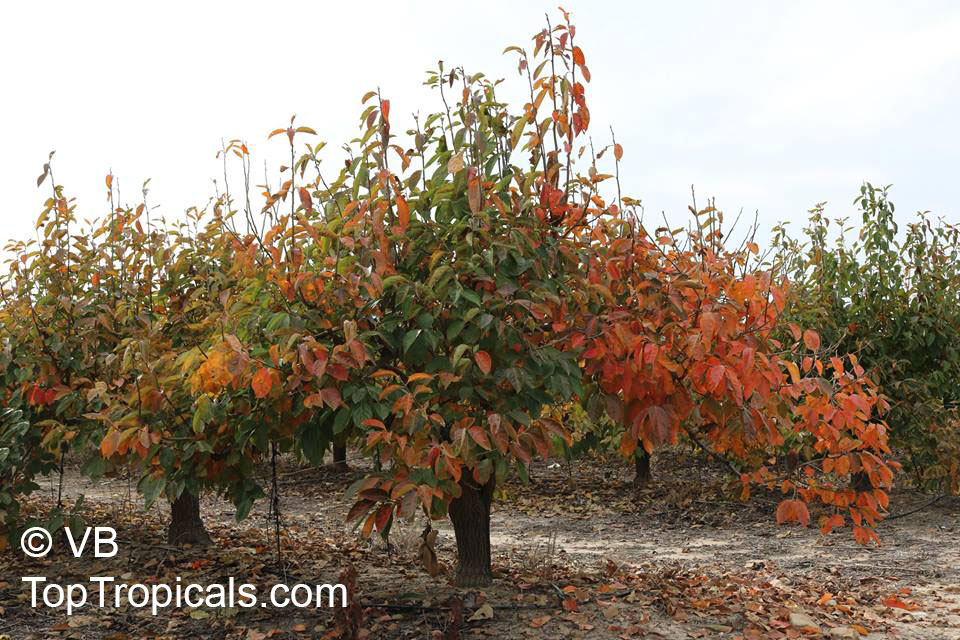Pictogram Guide · Mouse over pictogram for definition
Diospyros kaki
Kaki, Japanese Persimmon, Oriental Persimmon, Sharon FruitFamily: Ebenaceae
Origin: China








The persimmon is a multitrunked or single-stemmed deciduous tree to 25 ft. high and at least as wide. It is a handsome ornamental with drooping leaves and branches that give it a languid, rather tropical appearance. The branches are somewhat brittle and can be damaged in high winds. Leaves are alternate, simple, ovate and up to 7 inches long and 4 inches wide. They are often pale, slightly yellowish green in youth, turning a dark, glossy green as they age. Under mild autumn conditions the leaves often turn dramatic shades of yellow, orange and red. Tea can also be made from fresh or dried leaves. The inconspicuous flowers surrounded by a green calyx tube are borne in the leaf axils of new growth from one-year old wood. Female flowers are single and cream-colored while the pink-tinged male flowers are typically borne in threes. Persimmons can withstand a wide rage of conditions as long as the soil is not overly salty, but does best in deep, well drained loam. Tolerates alkaline soil. Can withstand short periods of drought, but the fruit will be larger and of higher quality with regular watering. Extreme drought will cause the leaves and fruit to drop prematurely. Persimmons are relatively problem-free. Most of the oriental persimmon trees are propagated onto the common persimmon, Diospyros virginiana. Persimmons are classified into two types based on fruit characteristics. The first classification is of the astringent and non-astringent cultivars. Astringent fruit must be soft or artificially treated before astringency is removed and they are suitable for eating. Fruit of the non-astringent types lose astringency while still hard and can be eaten hard or soft. The second classification relates to fruit flesh color when seeds are present. In pollination-variant types, the flesh is dark and streaked around the seeds, but clear orange when seedless. Pollination-constant types lack the dark streaking regardless of seed set.
In astringent cultivars of the pollination-variant type, the dark flesh is non-astringent even when hard; therefore, seeded, pollination-variant, astringent cultivars perform as non-astringent types. The amount of dark flesh coloration around the seeds varies with cultivars. In most areas of the world, astringent pollination variant types, which have a great degree of dark flesh, are classified as non-astringent cultivars. However (typically in Florida), these persimmons are grown without pollinators and their seedless astringent fruit necessitates classifying them as astringent types. Some dark specks can be found in the flesh of Fuyu variety and other non-astringent cultivars. This is not linked to seed set, and has no significance to the variant-constant classification system. Currently plantings of non-astringent types are increasing and both types of oriental persimmon are a popular dooryard fruit. Trees grow and fruit best in central and northern Florida and can produce high yields of quality fruit. In south Florida fruit quality is better with astringent types than with the non-astringent ones. Harvest season for astringent persimmon fruit is just prior to and through the soft stage of fruit development. If picked during this time, the fruit is either soft or will become soft and the astringent tannins are coagulated, making the fruit suitable for eating. Generally, fruit can be picked and softened at room temperature about 7 to 10 days before it would be softening on the tree. The time varies slightly with cultivars, and is about the same for both astringent and non-astringent types. Not all fruit in the crop load develop to this state at the same time. The softening process will be less effective and take longer to occur the earlier the fruit is picked.
Adding persimmon leaves to tea is supposedly quite beneficial (according to a couple studies) to general bodily functions. The leaves contian extremely high levels of Vitamin C (much more than green tea). They also contain: tannins, rutin, amino acids, magnesium, Manganese, calcium, and phosphorous.
Learn more: Growing Persimmon trees.
Similar plants:
- Diospyros blancoi, Diospyros discolor (Velvet Apple, Mabolo)
- Diospyros cauliflora (?) (Diospyros)
- Diospyros decandra (Gold Apple)
- Diospyros lotus (Qua thi, Date Plum)
- Diospyros maritima (Malaysian Persimmon, Sea Persimmon)
- Diospyros nigra, Diospyros digyna, Diospyros obtusifolia (Black Sapote, Chocolate Pudding Fruit, Black/Chocolate Persimmon)
- Diospyros sp. (Persimmon)
- Diospyros virginiana (Persimmon)
Recommended Fertilizer: SUNSHINE C-Cibus - Crop Nutrition Booster
SUNSHINE-Honey - sugar booster
Last one
Recommended Fertilizer: SUNSHINE C-Cibus - Crop Nutrition Booster
SUNSHINE-Honey - sugar booster
Recommended Fertilizer: SUNSHINE C-Cibus - Crop Nutrition Booster
SUNSHINE-Honey - sugar booster
Recommended Fertilizer: SUNSHINE C-Cibus - Crop Nutrition Booster
SUNSHINE-Honey - sugar booster
Recommended Fertilizer: SUNSHINE C-Cibus - Crop Nutrition Booster
SUNSHINE-Honey - sugar booster
Recommended Fertilizer: SUNSHINE C-Cibus - Crop Nutrition Booster
SUNSHINE-Honey - sugar booster
Recommended Fertilizer: SUNSHINE C-Cibus - Crop Nutrition Booster
SUNSHINE-Honey - sugar booster
